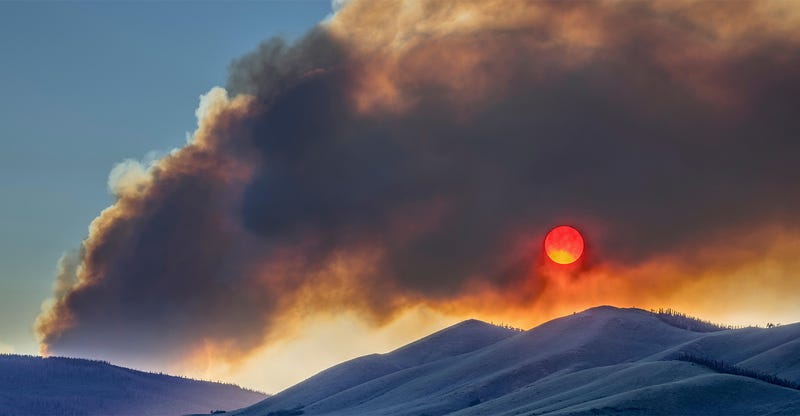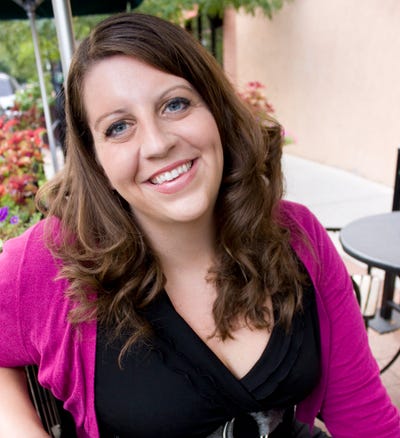New Food Order: Food companies must step up to mitigate climate change
In this episode, Moving Beyond Carbon Neutrality in Food and Agriculture, panelists discuss what corporations must do to remove more carbon from the atmosphere.
June 13, 2023

Corporations across the globe are pledging to become carbon neutral. More than 20% of companies in the world now have science-based target initiatives, according to Science Based Targets.
But is it even enough?
Food systems—both agriculture and food production—contribute to over a third of the world’s greenhouse gas emissions, according to the United Nations. Much comes from raising livestock and rice cultivation, which accounts for 35% of the food system greenhouse gas emissions.
“We’re in a period of green wishing where everyone's making these incredible climate commitments, very narrowly focused on carbon,” says Kathleen Merrigan, executive director for the Swette Center for Sustainable Food Systems at Arizona State University. “But I just don't know how real a lot of these wishes are.”
In many cases, corporate plans and measurements of “real strategy” are still unclear, Merrigan says.
“We’re not seeing reductions as we had hoped,” says Merrigan, a former United States deputy secretary of agriculture who was named one of Time magazine’s “100 Most Influential People in the World” in 2010.
The lack of reductions has big implications.
“Climate change is the greatest challenge of our time,” says Debbie Reed, executive director for Ecosystem Service Market Consortium, a nonprofit that compensates farmers and ranchers who improve the environment through agricultural practices. “And if we don't tackle it with the speed and the scale that scientists have indicated as necessary, we are going to lose agricultural production in many of the world's regions.”
In this 19th episode of New Food Order, a podcast investigating the business of tackling climate and social crises through food and agriculture, Louisa Burwood-Taylor, the head of media research at AgFunder and editor of AgFunder News, and Danielle Gould, the founder of Food+Tech Connect, host a roundtable discussion about why carbon neutrality is such an important focus and how corporations, start-ups, farmers and food production services can create more resilient supply chains to help mitigate climate change and continue growing food for the planet.
Emission targets for 2050 fall short
Since the Paris Agreement, an international treaty on climate change adopted in December 2015 at the UN Climate Change Conference (COP21), nations have focused on containing global warming to limit temperature increases to 1.5 degrees Celsius (34.7 degrees Farenheit). The agreement aims to reduce greenhouse gas emissions 45% by 2030 and reach net zero—contain emissions as close to zero as possible—by 2050. This includes moving to a green economy with more renewable energy.
The United Nations says current plans fall short of what is required.
United Nations Secretary-General António Guterres has called climate change a ticking “time bomb” where every country, every sector needs to fast-track climate efforts immediately.
Temperatures have already risen 1.1°C above pre-industrial levels. In March, the Intergovernmental Panel on Climate Change (IPCC) released the “Climate Change 2023: Synthesis Report,” detailing how climate-driven food and water insecurity is going to increase intense heatwaves, heavier rainfalls and weather extremes put more human health and ecosystems at risk.
“We don’t have time to wait until 2050,” says Julie Kunen, director of sustainability for Oatly North America. “The climate emergency is now. There’s an urgency to act now.”
Why all the focus on carbon?
Carbon reduction isn’t the easiest thing to focus on, but it’s a leading indicator right now.
When you're looking at biological agricultural managed ecosystems, reducing carbon emissions is difficult, Reed says. For many companies, reducing carbon is a key focus because many businesses know sourcing ingredients will be a problem for their products five or 10 years from now.
“Companies know they can’t exist if they can't continue to source their ingredients,” Reed says. “Some are already having problems doing that.”

More focus on ecosystem restorations to capture carbon
Ivo Degn, CEO of Climate Farmers, a company whose platform helps farmers focus on restoring ecosystems through regenerative agriculture, says too much focus is spent on buying offsets instead of reducing greenhouse gases.
“We talk a lot about implementing good projects that can have positive impacts on biodiversity and other regeneration aspects,” Degn says. "But first, you really need to reduce emissions. And I think sometimes this isn't emphasized enough.”
Instead of just looking at capturing carbon, more businesses and governments need to focus on restoring ecosystems.
“If we think we can capture carbon, and only focus on carbon, without taking into account ecosystem restoration or regeneration, we're going to put that carbon at risk,” Degn says. “We risk losing that carbon again.”
Degn points to “hundreds of examples” within reforestation efforts and soil-based carbon sequestration. Once an ecosystem is restored, the benefits of improving biodiversity, water and social aspects make it long-lasting and resilient.
“Carbon capture is a core benefit of ecosystem restoration,” he says. “And then we have a chance of durability.”
A more holistic, collective approach is needed
Nierenberg says part of the problem is too narrowly focusing only on carbon.
“So narrowly focusing on carbon, we're not thinking about youth, women and inherent racism that has affected our food systems, both domestically and internationally,” Nierenberg says.
Commitments need to be strategic and implementable in a way that works for farmers, eaters, businesses and policymakers alike, she says. A more holistic approach to climate change, where companies and countries more collectively and simultaneously work on solutions, is needed.
“No one company. No one actor get got us into this problem,” Reed says. “And no one company, no one actor, no one action can get us out.”
Measure more than carbon, improve supply chains
To accurately report supply chain emissions, many experts say companies need to account for all sources of greenhouse gases including nitrous oxide, methane and carbon dioxide, as well as increases in soil carbon, biodiversity, and water quality and quantity.
“A lot of companies are investing in projects that don't actually dock into their supply chain because it's really hard to do,” Kunen says. Oatly is attempting to invest in its supply chain via various pilot projects across Asia, North America and Europe.
“We don't know necessarily exactly how, but that's what we're going to try to get done,” Kunen says.
To prevent greenwashing, Kunen says all projects will be measured against a consistent set of outcomes and key performance indicators (KPIs) based on a baseline set of data. To track KPIs, Oatly is using Cool Farm Tool, an online greenhouse gas, water and biodiversity calculator for farmers, along with other methodologies including working with blockchain-enabled companies and on-farm questionnaires. (The tool is free for farmers, according to its website.)
“We're piloting a number of different tools, partners and methodologies right now to see what works the best, but I don't think it's going to be one tool in every place,” she says.
Oatly is also making changes to its manufacturing practices. Last year, the company switched two U.S. factories to use 100% renewable energy and began sourcing more ingredients strategically to reduce greenhouse gas emissions.
The changes are being coupled with climate footprint labeling on Oatly’s products.
Kunen says companies should honestly and transparently tell their consumers about their carbon and climate footprints in absolute numbers.
“Be honest about when it’s not an ideal situation,” she says. “And then tell people what you're going to do to reduce that impact.”
Farmers need to be better rewarded
Farmers need to be rewarded for the risks they’re taking, especially when it comes to regenerative agriculture. It’s also important for farmers to have a stable market from food and beverage companies that will consistently buy their products.
By reducing farmers' risks, companies are investing in the transition that's needed in food system, Kunen says.
“It’s about building farm viability and resilience,” Kunen says. “We want to be able to build generational security in farm families, so they’re actually able to pass their farms on from one generation to the next. That’s is not a current element in the agriculture system, at least in this country.”
Be transparent
“We’re pretty wary of using terms like climate neutral and climate positive,” Kunen says. “They sound really nice to consumers, but they really don't necessarily mean that the products or services are actually good for the environment.”
Instead, companies should think about how to have a net positive impact on the planet, such as changing ingredients from high methane-based products to more plant-based options.
Too many companies produce products, then simply try to make them “less bad,” Kunen says. And they try to manage their emissions by buying carbon credits to create reductions in systems outside their supply chains.
Listen and subscribe to the podcast here.
About the Author(s)
You May Also Like




